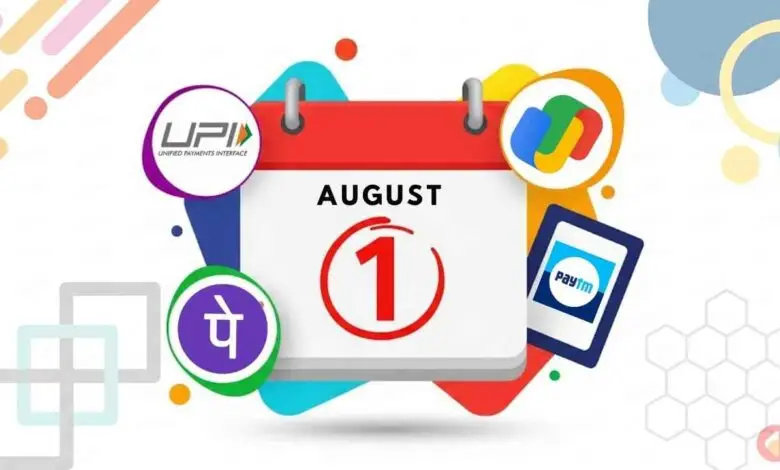India’s real-time digital payment backbone, the Unified Payments Interface (UPI), is all set for its most comprehensive regulatory revamp since its launch. Beginning August 1, 2025, a fresh set of mandates issued by the National Payments Corporation of India (NPCI) will come into force, introducing tighter controls, operational limits, and user-focused enhancements to improve security, reduce system strain, and streamline digital payment experiences.
With over 14 billion transactions now happening each month across platforms like Google Pay, PhonePe, Paytm, and others, UPI's scale has reached a point where efficiency and safety must evolve hand-in-hand with growth. These new rules aim to do just that.
Daily Cap on Balance Checks: No More Unchecked Pings
One of the most noticeable changes for everyday users is the 50-check-per-day cap on balance inquiries per app. Whether you’re someone who compulsively checks balances after every payment or just likes staying updated, this new limit means you’ll need to be more deliberate.
- The cap is per app, so if you use multiple UPI apps, each one maintains its own 50-check limit.
- Apps can no longer initiate background balance checks. Every balance request must be user-triggered.
This change is designed to reduce server overload, discourage excessive API calls, and create a more stable environment during peak hours.
Transparency at the Point of Payment
In a major move toward preventing mistaken or fraudulent transfers, UPI apps are now required to display the recipient’s full bank-registered name before the final confirmation screen. No more guessing if that “Ravi Kumar” is really the right one, UPI will now show verified identities in real time. Additionally, banks must show your updated account balance immediately after each transaction. This reduces user anxiety and limits the need to manually recheck balances just to confirm deductions.
AutoPay Gets a Timetable
Recurring UPI transactions, whether it’s a Netflix subscription, EMI payment, or automatic bill settlement, it will now be processed only during select time windows:
- Allowed: Before 10 AM, between 1 PM and 5 PM, and after 9:30 PM
- Blocked: Between 10 AM – 1 PM and 5 PM – 9:30 PM
This change is meant to reduce congestion during peak hours when most users are manually transacting. The result? Faster payments, fewer failures, and better distribution of backend resources.
Operational Limits to Prevent Abuse and Improve Fairness
To further protect the system from overload and misuse, NPCI has introduced new caps on commonly overused operations:
- Linked bank account views: Limited to 25 times per app per day.
- Status checks for pending payments: Capped at 3 attempts per transaction, with a mandatory 90-second gap between each retry.
- Payment reversal attempts: Limited to 10 per month per user, and 5 per sender to prevent system misuse.
These limitations are targeted primarily at bots, high-frequency users, and certain fintech services that hammer UPI systems unnecessarily.
Inactive UPI IDs to Be Deactivated
From August onward, any UPI ID linked to a mobile number inactive for more than 12 months will be automatically deactivated. This step is vital to prevent fraud from recycled or dormant numbers and protect user funds.
If you haven’t used your UPI in over a year or switched mobile numbers without updating your apps it’s time to log in and ensure your details are current.
Penalties for Non-Compliance
This is not a soft rollout. NPCI has made it clear that non-compliance by banks or apps beyond July 31, 2025, will invite serious consequences:
- Restrictions on new customer onboarding
- Temporary suspension of UPI services or APIs
- Loss of privileges for apps that violate operational caps
By holding platforms accountable, NPCI is emphasizing that the responsibility to maintain a stable and secure ecosystem lies with every stakeholder, not just the user.
Stronger Checks for Business UPI Accounts
UPI accounts used by merchants, service providers, or fintechs will now come under stricter scrutiny. Revised guidelines enforce:
- Controlled usage of UPI APIs
- Transparency in customer-led payments
- Faster refund processing on failed transactions
This is part of NPCI’s broader push to ensure that businesses don’t misuse UPI bandwidth or create friction in consumer transactions.

Why This Overhaul Matters
As digital payment adoption skyrockets in India, so do the challenges. Frequent glitches, server downtimes, and rising fraud cases have made it necessary for NPCI to introduce predictable, sustainable, and user-protective policies.
The new rules strike a balance between user freedom and system health. For individual users, the changes mean more transparency, fewer errors, and faster confirmations. For banks and apps, it’s a call to step up performance and accountability.
What You Should Do?
- Limit excessive balance and status checks to stay within daily limits.
- Double-check your mobile number and linked bank details to avoid deactivation.
- Be mindful of recurring payment timings to avoid failed debits.
- Watch for recipient name previews and avoid guesswork during transfers.
- Businesses and merchants should reassess how they use UPI APIs to remain compliant.
Final Thoughts
With UPI 2.0, India is taking a bold, necessary step toward building the world’s most resilient and user-friendly digital payment network. These changes aren’t just updates, they’re upgrades that reflect the platform’s maturity and the scale at which it now operates.
If you’re a UPI user and nearly everyone in India is, this August marks the start of a smarter and safer digital payments experience.


Discussion
Start the conversation
No comments yet
Be the first to share your thoughts on this article. Your insights could spark an interesting discussion!